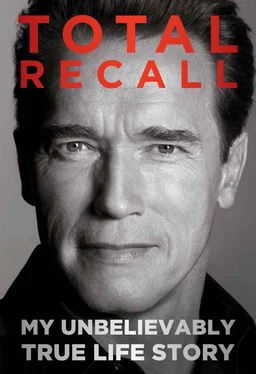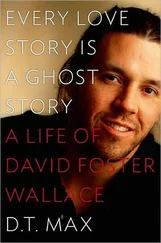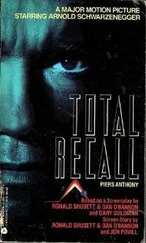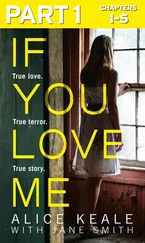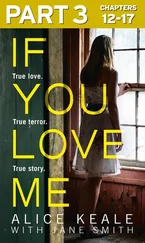Of course, total anonymity is almost impossible in Hollywood, especially for a Kennedy cousin. One of the real estate agents who knew of Maria’s Kennedy connection said to us while we were house hunting, “I have a fascinating house to show you in Beverly Hills. I’m not going to tell you what makes it so interesting; you just have to see.” We went, and she showed us around. Then she said, “Do you know who lived here? Gloria Swanson!” And she took us to the basement and showed us a tunnel that led to another house nearby. Joe Kennedy had used that tunnel during his and the actress Gloria Swanson’s long-running affair in the late 1920s. Afterward, Maria asked me, “Why did she show us this?” She was partly fascinated and partly mad and embarrassed.
_
Teddy’s campaign gave me an amazing opportunity to see what it is like to jump into a presidential race. I went to New Hampshire with Maria in February to experience the primary. The campaign staff was staying in a little hotel that buzzed like a beehive with media and campaign staff and volunteers and people with newspapers under their arm scurrying off to read the latest coverage. Organizers would send Maria out to some local factory to shake hands.
The operation seemed Mickey Mouse to me, because I didn’t understand the way campaigns work. Teddy Kennedy was a big-shot politician who made the cover of Time magazine when he decided to run. So I imagined that he would be addressing huge rallies. I’d already been to several rallies for Republican candidate Ronald Reagan that year, and he always drew one thousand to two thousand people, sometimes more. Even if Reagan was just stopping off at a factory somewhere to talk to the workers, it still looked like a rally, with flags, banners, patriotic music.
But there we were in this rinky-dink hotel. Shaking hands, going to shops, going to restaurants. “This is so odd,” I thought. “Why stay at this awful little hotel? Why not a grand hotel?” I didn’t know that when you start out, it is all about one-to-one contact. I didn’t know you can’t have campaign staff staying in grand hotels because somebody will inevitably write a story about how you are wasting the campaign money that hardworking people had donated. I didn’t understand that some events are big and some are smaller and more intimate, depending on the circumstances.
The 1980 Democratic race developed into something especially brutal. Before he jumped in, Teddy was ahead of President Carter in opinion polls by a margin of more than two to one. Everyone was egging on Teddy to run. Journalists were writing about how fantastic and powerful he was and how he would win easily against Jimmy Carter and save the day for the Democrats. He could do no wrong. But as soon as he announced his candidacy in November 1979, everything turned. The attacks were relentless. I couldn’t believe the difference. It didn’t help that in a national interview on CBS, Teddy couldn’t give a convincing answer when asked why he wanted to be president. People challenged his character because of the 1969 car crash on Chappaquiddick Island, Massachusetts, that killed his passenger, Mary Jo Kopechne, a former campaign worker for RFK. They also claimed that Teddy was just living off his brothers’ reputation, even though he’d been a senator for eighteen years.
I was shocked. It was amazing to be in the front row and watch it all play out in front of my eyes.
Teddy lost the crucial early primaries in Iowa and New Hampshire, and that caused some of his funding to dry up—which meant that the campaign had to downsize even before the primaries in the larger states. But then he fought his way back enough to win several major states, including New York in March, Pennsylvania in April, and—thanks in part to Maria’s efforts—California in June. However, he lost in dozens of other states, and in the national opinion polls, he never caught President Carter again. Teddy ended up winning only ten primaries out of thirty-four. On the first day of the Democratic National Convention in August, it was clear that President Carter had enough delegates to lock up the nomination, and Teddy was forced to drop out.
All of a sudden, after months of intense effort, it was over, and Maria was sad and depressed. The family had experienced so much devastation just in her lifetime, starting with President John F. Kennedy’s assassination when she was eight, and Bobby Kennedy’s when she was twelve, and the Chappaquiddick incident the following summer. Then on top of those, she saw her father lose in a landslide as George McGovern’s vice presidential running mate in 1972, and lose when he tried to get the Democratic presidential nomination in 1976. And now Teddy had run, and they’d been handed another loss.
She’d put her heart into the campaign. I could see how overwhelming politics can become and how totally out of control. When you run for president, you feel the public pressure every day. The national and local media track everything you say and do, and everyone is analyzing you. Seeing her uncle go through that and lose was really, really tough. I was happy to play a supportive role in these difficult circumstances. “You did a fantastic job,” I told her, “the way you spoke to the media, the way you busted your butt for Teddy.” The experience confirmed Maria’s dim view of politics as a career choice.
I used all the skills I had to cheer up Maria. I whisked her away to a vacation in Europe, where we had a great time visiting London and Paris and going all around France. Soon Maria stopped feeling like a beaten-down campaign worker, and her enthusiasm and sense of humor returned.
Before Maria had left the East Coast, she’d made a gutsy career change. She’d started with the goal of being the producer, the person in the control room. Now she decided to go on camera and compete for one of those scarce top jobs in network news. I’d always advanced by starting with a clear vision and working as hard as possible to achieve it, and I could see that same determination unfolding in Maria. I thought it was great.
No one in the Kennedy family had ever been an on-camera journalist. It was a totally new thing, and it was hers . I’d watched some of her cousins carve out their niches, but it almost always involved specializing in a cause or issue within the framework of the family beliefs. For Maria to go out and be in front of the camera was a real declaration of independence.
As soon as we got back to Santa Monica, she set to work making connections and getting the necessary training, much as I had done with my acting. What did it take to succeed in front of the camera? She had to figure that out. What did she need to change about her looks, her voice, her style? What should she keep the same? Her teachers would say, “Your hair’s too big, you have to cut it down. Or can you pull it back? Let’s try that. Your eyes are too strong; maybe let’s tone down the eyes.” There was all this shaping and molding going on. She had to learn what makes you easy to look at and listen to day after day on TV, and not be overly dramatic and divert attention from the news, which should be the focus.
During my Conan shoot in Madrid the following winter, we couldn’t see each other for five months. She mailed me photos showing that she’d lost ten pounds and shortened her hair and put a little wave in it. Conan , meanwhile, had been scheduled and postponed several times. We were supposed to go on location in Yugoslavia in the summer of 1980, but Yugoslavia became unstable due to the death of its dictator, Marshal Tito, in May. The producers decided it would be cheaper and simpler to move the production to Spain in the fall. Then when Maria and I got back from Europe, I learned that the project had been delayed again until after New Year’s.
Читать дальше
